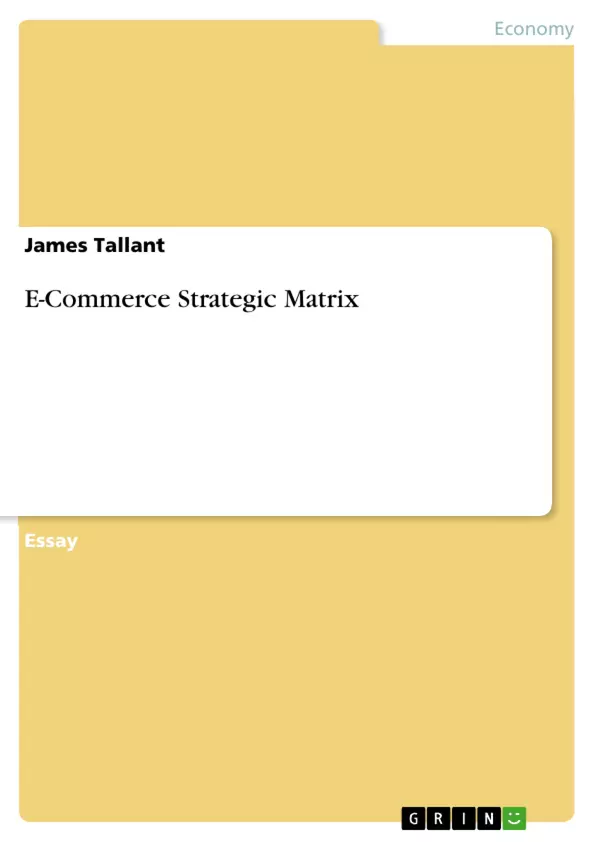E-Commerce Strategic Matrix
Various types of organizations use e-commerce as part of their business strategy. Depending upon the type of industry and the prospective customer base identifies the appropriate e-commerce model. In the do-it-yourself home improvement retail market, organizations like Ace Hardware, Home Depot, and Lowe’s use various forms of e-business commerce. The two e-commerce models to be reviewed in this paper are the business-to-business (B2B) model and the business-to-consumer (B2C) model. However, any e-business model relates to the flow of information and processes among enterprises and their underlying Enterprise Information System (EIS). E-businesses purpose is to facilitate supply, distribution, and customer information exchange, coordination and collaboration between multiple trading partners. In this paper, I will compare and contrast B2B and B2C e-commerce elements within the retail do-it-yourself home improvement market. Among the elements to be compared are cost, consumer exposure, customer service, differences in website structure, access rights, audience, and security.
B2B Model
Organizations that use the B2B model often seek to enhance supply chain performance to “enhance value to one or more of the organizations stakeholder groups and lower the costs of producing goods and services for the market place” (Basu & Muylle, 2007, p. 1, para. 5). Organizations must use caution when implementing an e-commerce model like B2B. Many organizations do not realize the financial and legal risks of using B2B e-commerce. To avoid financial and legal risks when using B2B e-commerce several factors must be reviewed and addressed before successfully implementing and using B2B e-commerce.
As illustrated below, the B2B e-commerce model differs from the B2C e-commerce model in several areas.
illustration not visible in this excerpt
The B2B and B2C models differ in what the websites are intended to convey and what information they contain. Specific and often detailed information is contained on B2B transactions through the Internet. Shopping is not the focus in B2B e-commerce transactions, the exchange of information is. On the other hand, B2C transactions involve not only providing the ability to shop, but also the ability to seek information and compare products and services.



